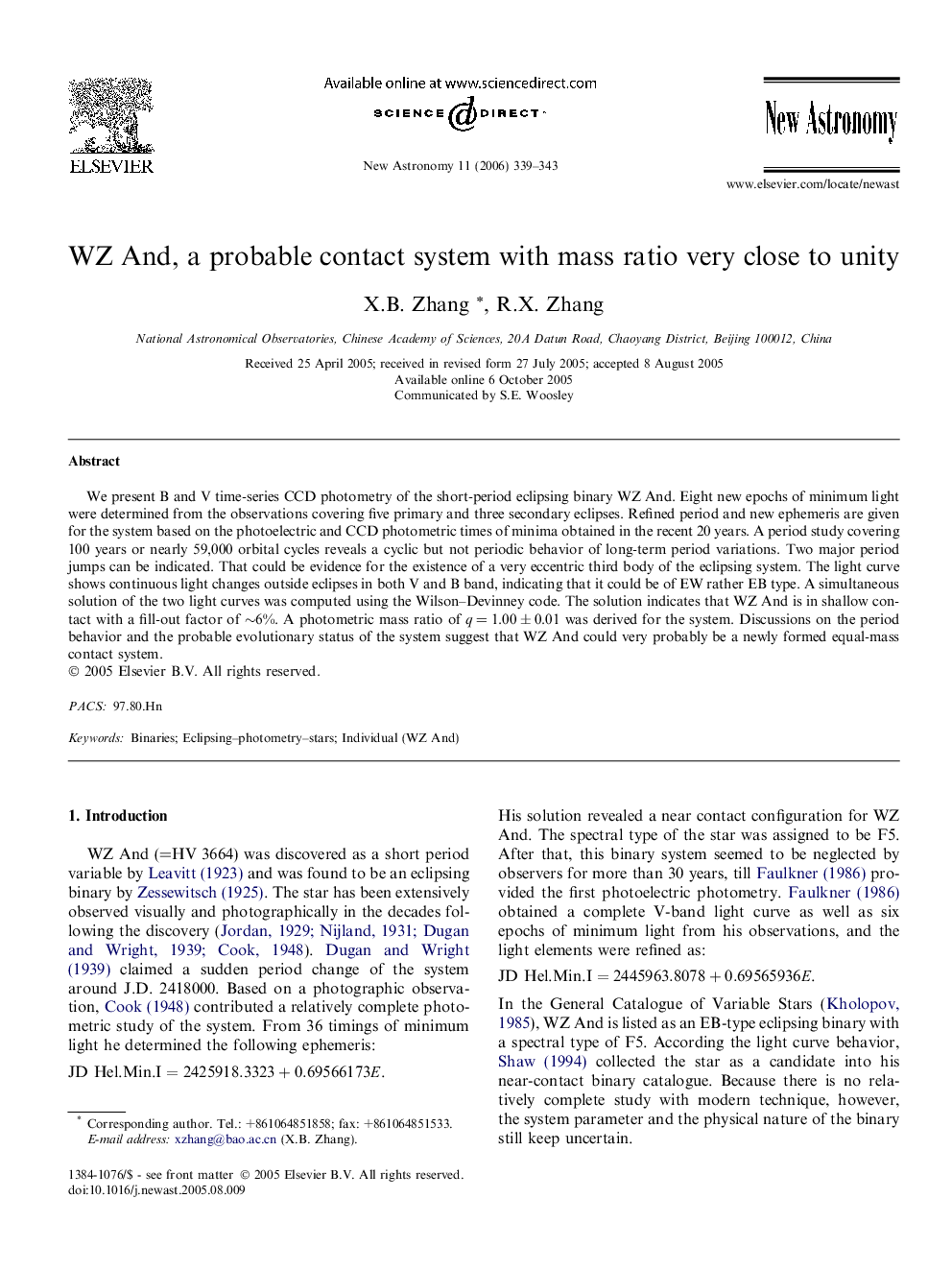| Article ID | Journal | Published Year | Pages | File Type |
|---|---|---|---|---|
| 1779747 | New Astronomy | 2006 | 5 Pages |
Abstract
We present B and V time-series CCD photometry of the short-period eclipsing binary WZ And. Eight new epochs of minimum light were determined from the observations covering five primary and three secondary eclipses. Refined period and new ephemeris are given for the system based on the photoelectric and CCD photometric times of minima obtained in the recent 20 years. A period study covering 100 years or nearly 59,000 orbital cycles reveals a cyclic but not periodic behavior of long-term period variations. Two major period jumps can be indicated. That could be evidence for the existence of a very eccentric third body of the eclipsing system. The light curve shows continuous light changes outside eclipses in both V and B band, indicating that it could be of EW rather EB type. A simultaneous solution of the two light curves was computed using the Wilson-Devinney code. The solution indicates that WZ And is in shallow contact with a fill-out factor of â¼6%. A photometric mass ratio of q = 1.00 ± 0.01 was derived for the system. Discussions on the period behavior and the probable evolutionary status of the system suggest that WZ And could very probably be a newly formed equal-mass contact system.
Related Topics
Physical Sciences and Engineering
Physics and Astronomy
Astronomy and Astrophysics
Authors
X.B. Zhang, R.X. Zhang,
